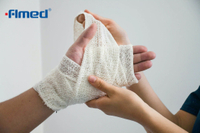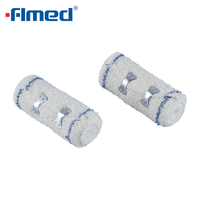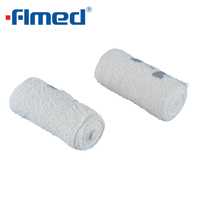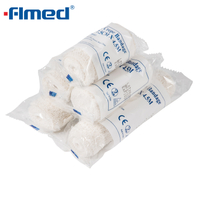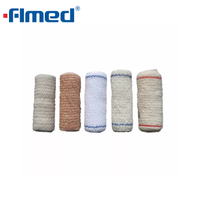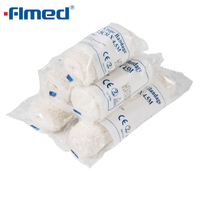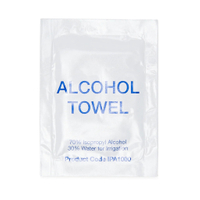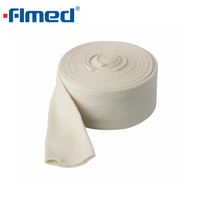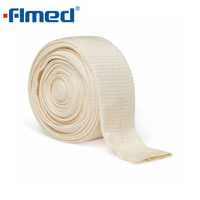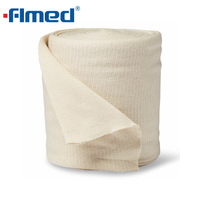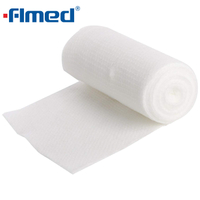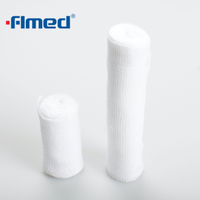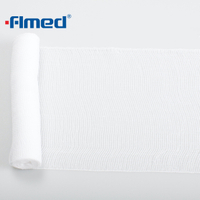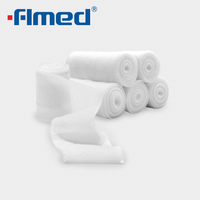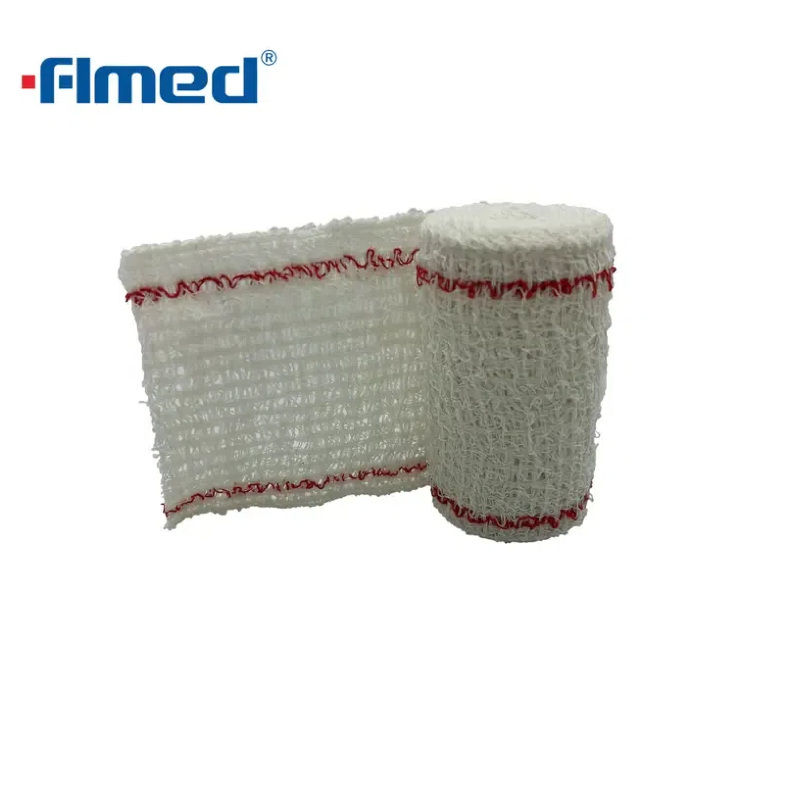
High elastic bandages are an essential part of modern medical care, widely used for controlled compression, swelling reduction, and temporary stabilization of joints and muscles. Forlong Medical, a trusted supplier of high-quality medical disposables, provides a range of high elastic bandages suitable for both professional and home use. Understanding the correct way to apply these bandages is crucial to ensure safety and effectiveness while maximizing their therapeutic benefits. Using them correctly can not only relieve pain and reduce swelling but also accelerate the recovery process after injury or surgery.
What Makes a Bandage “High Elastic”?
High elastic bandages differ from standard bandages due to their superior stretchability and compression control. Typically made from a blend of cotton, polyester, and elastic fibers, these bandages can stretch up to 100–200% of their original length. The elasticity allows them to provide consistent pressure over the area, which is essential for managing swelling, improving blood flow, and supporting injured joints.
Clinically, high elastic bandages play a crucial role in compression therapy. They are often recommended by healthcare professionals to manage conditions such as edema, sprains, or post-activity inflammation. The elasticity ensures that the pressure applied is adjustable, allowing for both snug support and patient comfort. Unlike crepe bandages, which offer limited stretch and are mainly used for light support, high elastic bandages adapt to movement while maintaining therapeutic compression.
The controlled elasticity also reduces the risk of complications such as impaired circulation, making them suitable for a range of musculoskeletal issues. They are also highly versatile, as their flexibility allows them to conform to irregular body shapes such as the ankle, wrist, or knee. Whether for professional sports applications or home injury management, these bandages offer a reliable solution for temporary stabilization and rehabilitation support.
When to Use a High Elastic Bandage vs Other Bandages
Choosing the right type of bandage depends on the intended application. High elastic bandages are ideal for scenarios where compression is the primary goal. Common indications include:
Oedema control: Swelling caused by injury, surgery, or chronic conditions can be effectively managed with a high elastic bandage, as it provides continuous, gentle pressure to reduce fluid accumulation.
Compression after activity: Athletes often use these bandages after strenuous exercise to prevent muscle fatigue, reduce soreness, and support joints.
Temporary stabilization: For sprains or minor joint injuries, high elastic bandages offer stability without the rigidity of a plaster of paris bandage, allowing for partial mobility while protecting the affected area.
In contrast, crepe bandages are generally used for light support or holding dressings in place, offering less stretch and compression. Plaster of paris bandages provide rigid immobilization and are used primarily for fractures, whereas PBT bandages combine elasticity with technical fabric advantages for specific rehab applications. By understanding these differences, medical professionals and home users can ensure they select the bandage that best meets both therapeutic needs and comfort requirements.
![Bandage Bandage]()
Correct Application: Step-by-Step Guide
Proper application of a high elastic bandage is critical to prevent complications such as restricted blood flow or skin irritation. Below is a step-by-step guide for common areas such as the ankle and knee.
Step 1: Prepare the area
Before wrapping, ensure the skin is clean and dry. If there are any open wounds, apply a sterile dressing first. Position the limb comfortably, slightly elevated if swelling is present. Removing jewelry or accessories that might interfere with the wrap is also important.
Step 2: Start wrapping
Begin at the distal part of the limb (for an ankle, start at the toes; for a knee, start below the joint). Hold the bandage roll with one hand while securing the starting end with a gentle stretch. Ensure the first layer is snug but not tight enough to restrict circulation.
Step 3: Overlap correctly
Overlap each successive layer by approximately 50% of the bandage width. This ensures even compression and prevents gaps that could reduce effectiveness. Maintain a consistent tension throughout the wrapping process. For high elastic bandages, a moderate stretch is sufficient—overstretching can cause discomfort and impede blood flow.
Step 4: Cover the entire target area
For ankle wraps, extend the bandage to just below the calf. For knee wraps, cover the area from the mid-calf to mid-thigh. Avoid covering joints completely if it restricts movement, unless recommended by a healthcare professional. The goal is to support the joint while allowing some natural mobility.
Step 5: Secure the bandage
Most high elastic bandages have Velcro closures or clips. Ensure the end is fastened securely without creating excessive pressure points. Smooth out wrinkles and adjust tension as needed. A well-secured bandage prevents slipping during activity and maintains consistent compression throughout the day.
Step 6: Check circulation
After application, check for signs of restricted blood flow. The extremity should remain warm and pink, with normal sensation. Common red flags include numbness, tingling, or a bluish tint. If any of these occur, rewrap with less tension. Frequent monitoring is especially important during prolonged wear or when bandages are used for swelling control after surgery or injury.
Maintenance: Washability, Reuse, Replacement Frequency
High elastic bandages are reusable but require proper care to maintain elasticity and hygiene.
Washing: Hand wash with mild detergent in lukewarm water. Avoid bleach or harsh chemicals that degrade fibers. Rinse thoroughly to remove any soap residue.
Drying: Air-dry flat to retain shape and elasticity. Avoid high heat from dryers, which can weaken elastic fibers.
Replacement: Over time, repeated use and washing will reduce the bandage’s elasticity. Replace bandages showing fraying, loss of stretch, or thinning to ensure consistent therapeutic pressure.
Proper maintenance not only prolongs the life of the bandage but also prevents skin irritation and ensures effective compression over time. Using multiple bandages in rotation can extend their lifespan while keeping a clean and hygienic supply ready for continuous use.
Packaging & Ordering Guide for Bulk Buyers
For healthcare providers and bulk buyers, understanding packaging options and specifications is important. High elastic bandages are commonly available in:
Lengths: 2 to 5 meters per roll
Widths: 5 to 10 cm
Stretch rating: 100–200% elasticity for controlled compression
Reputable suppliers, such as Forlong Medical, provide labeling that includes size, material composition, and compliance certifications. Bulk orders may include different widths and lengths to accommodate multiple clinical or sports applications. Clear labeling and standardized packaging help medical facilities manage inventory efficiently while maintaining quality assurance. Additionally, ordering in bulk ensures cost savings without compromising on quality, an important factor for clinics, hospitals, and sports therapy centers.
Product Focus & Benefits
Forlong Medical offers a range of high elastic bandages designed for reliability and patient comfort. Our bandages provide:
Consistent compression for swelling and injury support
Soft, breathable material for extended wear
Durable elasticity suitable for repeated use
Versatility for ankles, knees, wrists, and other joints
These bandages are suitable for hospitals, physiotherapy clinics, sports teams, and home care, ensuring that patients receive effective support for both acute and chronic conditions. By choosing high-quality bandages from a trusted supplier, users can maximize the therapeutic benefits while minimizing risks.
Conclusion
High elastic bandages are an indispensable tool in compression therapy, injury support, and temporary stabilization. By following proper wrapping techniques and maintaining your bandages, you can ensure safety and effectiveness while supporting recovery. Forlong Medical provides high-quality, reliable bandages designed for medical professionals and individual users alike. To explore our full range and request samples or quotations, contact us today and ensure your medical supplies meet the highest standards for patient care and rehabilitation.

 English
English
